Dogs are not immune to dental issues, and just like humans, they require proper dental care to maintain overall health and well-being. Have you ever wondered about the significance of your furry friend’s dental health? Are you aware of the potential dental problems that can affect your canine companion? Understanding these issues and knowing how to address them is crucial for ensuring your dog’s oral hygiene and overall health.
Contents Overview
Dental problems in dogs are more than just bad breath; they can significantly impact your furry friend’s overall health and well-being. Imagine if your dog could tell you when they have a toothache or swollen gums! Unfortunately, they can’t, which is why it’s crucial for pet owners to stay vigilant. From plaque buildup to periodontal disease, dogs can experience a range of dental issues that, if left untreated, can lead to pain, discomfort, and even systemic health problems. By understanding the signs and symptoms of dental problems in dogs and taking proactive steps to prevent and treat them, you can ensure your canine companion maintains a bright smile and a wagging tail for years to come. So, let’s delve deeper into the world of canine dental health and discover how to keep those pearly whites shining bright!
Common Dental Problems in Dogs:
From plaque buildup to periodontal disease, understanding these issues is crucial for ensuring your canine companion’s oral hygiene. In this comprehensive guide, we’ll delve into the common dental problems that affect dogs, their causes, symptoms, prevention, and treatment options.
Plaque and Tartar Build-up:
- Dogs, like humans, accumulate plaque on their teeth due to bacteria and food particles.
- If not removed through regular brushing, plaque hardens into tartar, leading to gum irritation and bad breath.
Gingivitis:
- Gingivitis in dogs is characterized by inflammation of the gums caused by bacterial infection.
- Symptoms include swollen, red, and bleeding gums, which can progress to more severe periodontal disease if left untreated.
Periodontal Disease:
- Advanced stages of gingivitis can lead to periodontal disease, affecting the supportive structures of the teeth.
- This condition can cause tooth loss, pain, and even systemic health issues if bacteria enter the bloodstream.
Tooth Decay:
- Tooth decay in dogs, although less common than in humans, can occur due to poor dental hygiene or a high-sugar diet.
- Decay usually affects the molars and can lead to toothache and discomfort.
Broken or Fractured Teeth:
- Trauma from chewing hard objects or untreated dental disease can result in broken or fractured teeth.
- Exposed nerves can cause pain and increase the risk of infection if left untreated.
Signs of Dental Problems in Dogs:
Recognizing the signs of dental problems in dogs is crucial for early intervention and proper treatment. Here are some common indicators to watch out for:
Bad Breath (Halitosis):
- Persistent foul odor from your dog’s mouth, often indicative of bacterial buildup or dental decay.
Visible Tartar and Discoloration:
- Yellow or brownish buildup on the teeth, signaling the presence of plaque and tartar.
Swollen or Bleeding Gums:
- Inflamed, red, or bleeding gums, which may indicate gingivitis or periodontal disease.
Reluctance to Eat or Chew:
- Difficulty eating or chewing, reluctance to play with chew toys, or dropping food from the mouth due to dental discomfort.
Pawing at the Mouth:
- Your dog may paw at their mouth or rub their face against surfaces in an attempt to alleviate pain or irritation.
Excessive Drooling:
- Drooling beyond the usual amount, especially if accompanied by other symptoms like bad breath or swollen gums.
Changes in Behavior or Mood:
- Irritability, reluctance to be touched around the mouth, or avoiding certain types of food may indicate underlying dental issues causing discomfort.
Visible Tooth Damage:
- Broken, fractured, or missing teeth, which can result from trauma, chewing hard objects, or advanced dental disease.
Loss of Appetite or Weight Loss:
- Dental pain or discomfort may lead to a decreased appetite or difficulty eating, resulting in weight loss over time.
Unusual Salivation Patterns:
- Excessive drooling or dry mouth can both be indicators of dental problems, depending on the underlying cause.
Prevention and Dental Care:
Maintaining good dental hygiene is key to preventing dental problems in dogs. Here are some preventive measures and dental care tips to keep your furry friend’s teeth healthy:
Regular Brushing:
- Use a dog-specific toothbrush and toothpaste to brush your pet’s teeth daily.
- Start slowly and make the experience positive with treats and praise to accustom your dog to the routine.
- Focus on the outer surfaces of the teeth, as this is where plaque tends to accumulate.
Dental Chews and Toys:
- Provide dental chews and toys designed to reduce plaque and tartar buildup.
- Chewing on appropriate toys helps massage the gums and scrape away plaque.
- Opt for dental treats with ingredients like enzymes or abrasives that promote oral health.
Professional Dental Cleanings:
- Schedule regular dental check-ups with your veterinarian.
- Professional cleanings may be necessary to remove stubborn tartar and address underlying dental issues.
- Your vet can also perform a thorough examination of your dog’s teeth and gums to detect any potential problems early on.
Diet and Nutrition:
- Feed your dog a balanced diet that promotes dental health.
- Choose high-quality dog food and avoid sugary treats and snacks that contribute to plaque formation.
- Consider dental-specific diets or treats formulated to support oral hygiene.
Routine Examination:
- Monitor your dog’s oral health regularly by inspecting their teeth and gums.
- Look for signs of dental problems such as bad breath, tartar buildup, or swollen gums.
- If you notice any abnormalities, consult your veterinarian for further evaluation and treatment.
Water Additives and Oral Rinses:
- Consider using water additives or oral rinses designed to reduce plaque and freshen breath.
- These products can help supplement your dog’s dental care routine and promote oral hygiene.
Avoiding Harmful Habits:
- Discourage chewing on hard objects like rocks, bones, or antlers, which can cause tooth fractures or wear down enamel.
- Be cautious with abrasive toys or treats that could damage your dog’s teeth or gums.
Treatment Options:
When it comes to treating dental problems in dogs, several options are available depending on the severity of the condition. Here are some common treatment options:
Dental Scaling and Polishing:
- For mild cases of plaque and tartar buildup, your veterinarian may recommend dental scaling and polishing.
- This procedure involves the removal of plaque and tartar from the teeth using specialized tools.
- Polishing follows to smooth the tooth surfaces and reduce bacterial adhesion, helping to prevent further buildup.
Extractions:
- Severely damaged or infected teeth may require extraction to alleviate pain and prevent the spread of infection.
- Your veterinarian will assess the affected teeth and recommend extraction if necessary.
- Extractions are performed under anesthesia to ensure your dog’s comfort and safety.
Root Canal Therapy:
- In cases where a tooth is damaged but can be salvaged, root canal therapy may be an option.
- This procedure involves removing the infected or damaged pulp from the tooth’s root canal and filling it with a biocompatible material to seal it off.
- Root canal therapy can help preserve the tooth’s structure and function while eliminating pain and infection.
Periodontal Treatment:
- Advanced periodontal disease may require more extensive treatment, such as periodontal surgery.
- Procedures such as gingival flap surgery or guided tissue regeneration may be performed to address deep periodontal pockets and restore gum health.
- Your veterinarian will assess the extent of the periodontal disease and recommend the most appropriate treatment plan.
Antibiotics and Pain Management:
- Antibiotics may be prescribed to treat bacterial infections associated with dental problems.
- Pain management medications may also be administered to alleviate discomfort and improve your dog’s quality of life during treatment.
Ongoing Maintenance:
- After treatment, your veterinarian will provide instructions for ongoing dental care and maintenance.
- This may include regular follow-up appointments, dental cleanings, and home care techniques to prevent recurrence of dental issues.
Bottom Line
Your dog’s dental health is an integral part of their overall well-being. By understanding the common dental problems in dogs, recognizing the signs of dental issues, and implementing preventive measures and proper dental care, you can help ensure a healthy and happy life for your canine companion. Remember, a bright smile goes a long way – even for our furry friends! Take proactive steps to maintain your dog’s dental hygiene and consult your veterinarian for professional guidance and treatment when needed. Your efforts will be rewarded with a wagging tail and a grateful, healthy pup by your side.
Key Takeaways
- Importance of Dental Health: Dental problems in dogs are not just about bad breath; they can lead to pain, discomfort, and systemic health issues if left untreated.
- Common Dental Issues: Dogs can experience plaque and tartar buildup, gingivitis, periodontal disease, tooth decay, and broken or fractured teeth.
- Signs to Watch For: Keep an eye out for bad breath, tartar buildup, swollen or bleeding gums, reluctance to eat or chew, pawing at the mouth, excessive drooling, and changes in behavior or mood.
- Preventive Measures: Regular brushing with dog-specific toothpaste and toothbrush, providing dental chews and toys, scheduling professional dental cleanings, feeding a balanced diet, and routine oral examinations are essential for preventing dental problems.
- Treatment Options: Treatment may include dental scaling and polishing, extractions, root canal therapy, periodontal treatment, antibiotics, and pain management, depending on the severity of the condition.
- Ongoing Maintenance: After treatment, follow your veterinarian’s recommendations for ongoing dental care to prevent recurrence of dental issues and maintain your dog’s oral health.
- Early Intervention is Key: Early detection and treatment of dental problems can alleviate pain, prevent complications, and ensure your dog’s continued well-being.
- Regular Monitoring: Stay vigilant and monitor your dog’s oral health regularly for any signs of dental problems, and consult your veterinarian if you notice any abnormalities.











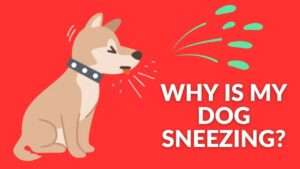
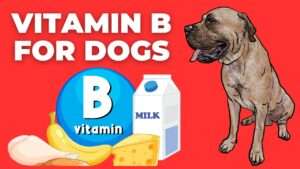
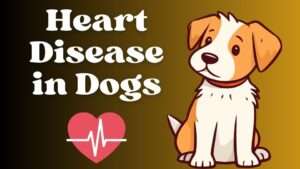



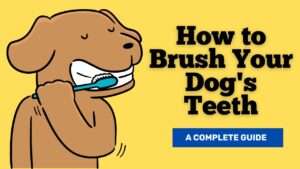
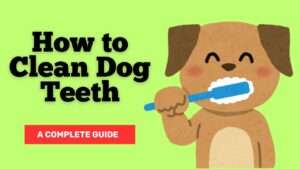
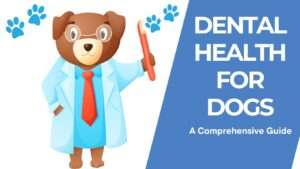







+ There are no comments
Add yours